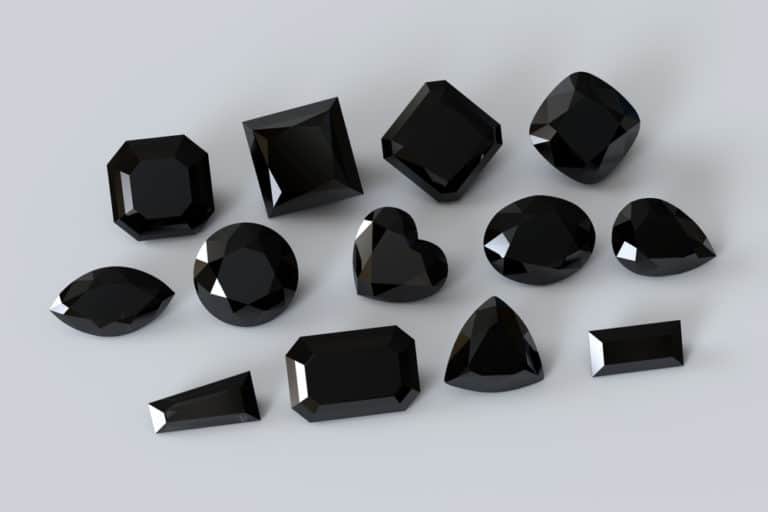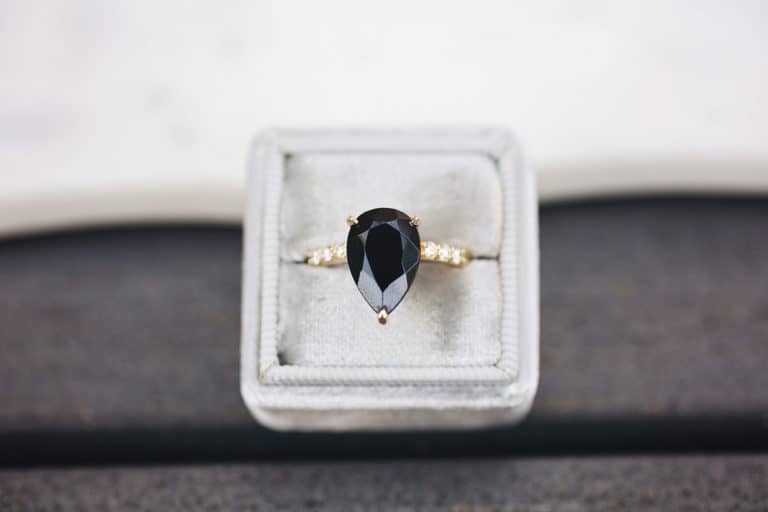
What’s your taste when it comes to Diamond? Do you love your things vintage and glowing, or do you prefer the clean, modern, and brilliant? The answer to that will help you choose between old European cut diamond and round brilliant diamond.
At a glance, the old European cut can look alike with a round brilliant cut. Probably, that’s why we get a lot of questions about the two diamonds.
So, old European cut diamond vs round brilliant….what’s the difference? Let’s start by defining them first.
What is an Old European Diamond?

Old European diamond is a round diamond cut between 1890 and 1930. This type of diamond was common during the period of art deco. During this period, they were common until the rise of a round brilliant cut diamond.
The shape of the old European diamond depended on weight. Diamond cutters during that time didn’t consider brilliance. Instead, they cut and polished these diamonds against candlelight.
Therefore, you’ll realize that these diamonds are not as sparkly as brilliant round diamonds. They also have large facets. You would easily recognize them by the small circle at the diamond’s table.
The facet at the bottom of a diamond is known as a culet. Old European large culet allows more light to escape through the bottom. Thus, a dark circle forms at the center of this type of diamond.
If you go to the market, you’ll find out that most modern diamonds lack culets. Instead, they have sharp points at the bottom. Because of the lack of culets, most of them don’t have a circle at the center on the diamond’s table.
What is a Round Brilliant Diamond?

Round brilliant is a diamond with 58 facets. All the facets in this diamond will reflect white light to your eyes. As a result, you can say that a brilliant round diamond offers exceptional brilliance.
Since technology has grown drastically over time, this has impacted how cutters cut and polish diamonds. Cutters are now focusing more on brilliance than the color of the diamond.
If we were to define a brilliant round diamond, we would consider the tables, facets, and culets. You will note that brilliant round diamond has larger tables and small culets.
Additionally, facets on the brilliant round diamond lean. This feature, among others, makes this type of diamond ideal for rings. Besides, you’ll love its brilliance.
What is the Difference between Old Cut Diamonds and Round Brilliant?
Old cut diamonds and round brilliants have some features in common. Nonetheless, they have an equal share of differences. Although not so noticeable, the following features make the two diamonds differ:
Table Size
European cut diamonds have small tables. The table size is usually between 38 to 53 percent of the diamond’s diameter. On the other hand, round diamonds have large tables. Their table size ranges from 55 to 60 percent of the diamond’s diameter. However, there are round diamonds with a table size of less than 55 percent.
The Shape of the Facet
It is good to note that both European and round diamonds have 57 to 58 facets. However, the facets on the two diamonds are of different shapes. The difference in form makes a significant difference.
Old European diamond facets are triangular. On the other hand, facets of the round diamond are thinner. Also, European diamonds have longer, lower facets than round ones.
Culet Size
You’ll note that old European diamonds have large culets. The culets are larger to be seen on the diamond’s table. As seen earlier, the culet size determines the diamond’s brilliance.
When it comes to round diamonds, Culets’ size varies from one diamond to another. However, round diamonds with no culets are the best. They sparkle more than the ones with culets.
The Finishing on the Girdle
Most antique diamonds have bruited girdles. However, the old European cut diamonds have a frosted girdle, and most round-cut diamonds have a different girdle. You can’t help but notice that the girdle is usually faceted like in most modern forms of a diamond.
Symmetry
The precision during the cut of diamonds is pivotal. Precisely cut diamonds are attractive for obvious reasons. On the other hand, diamonds cut with no precision are likely to have some flaws.
Diamond cutters used their hands to cut old European diamonds. In this case, most of them aren’t symmetrical. However, that doesn’t make them less attractive.
On the other hand, most round-cut diamonds are symmetrical. Cutters used laser and, more so, modern imaging to cut them. So, you’ll find the round brilliant diamonds more appealing.
Motive of Cut
Despite the two forms of diamond existing at different times, the motive of cutting diamonds has changed. Cutters in ancient times were more interested in color than brilliance.
The European diamond cutting process was color-oriented. On the contrary, round-cut diamonds are cut to optimize brilliance. The results are evident in the appearance of both diamonds.
Price
Price is something that we consider while purchasing items. We will agree that quality items are more expensive. However, in the case of these two diamonds, the situation is different.
Old European diamonds are slightly cheaper compared to round ones. However, the price depends on the carat weight, color, and clarity. Diamonds with more clarity will cost you way more.
Round cut diamonds are slightly expensive. The cost is way higher due to additional expenses of cutting precisely. Additionally, cutting modern round diamonds may take a longer time.
It’s imperative to highlight that costs may vary. For instance, an old European diamond with historical significance may cost you way more. In this case, carat weight or quality doesn’t matter.
Which to choose between an Old European Cut Diamond and Round Brilliant?

Both old European and brilliant round diamonds are unique in their ways. But, are you at crossroads on which one you should choose? Don’t sweat it out; we got your back on this. Below we will take you through some of the factors to consider:
Uniqueness/precision
Most people find old European diamonds unique. As highlighted earlier, most of them were cut using hands. Thus, finding a diamond with an exact resemblance to yours is rare.
On the contrary, round-cut diamonds are adored by symmetrical diamond lovers. Most are precisely cut giving them the perfect shape. So, are you after uniqueness or precision? It all depends on your preference.
Cost
Some old European diamonds are expensive than round-cut diamonds. However, the majority of round diamonds are expensive. Consequently, your choice depends on how much money you have.
Old European diamonds are likely to give you the best value for your money. Nonetheless, clarity and brilliance shouldn’t be an issue. You should be contented with its flaws.
Modern round cut diamonds are expensive. However, their brilliance and shape are unmatched. In this case, there is nothing like one size fits it all. So, cut the coat as per your size!
Availability
It’s good to highlight that old European diamonds are becoming rare. In most cases, some are re-cut to modern forms. Therefore, it won’t be a surprise if they become extinct with time.
European diamond decrease may be a blessing in disguise to many. Those who adore uniqueness may happily keep their gems. Surprisingly, their prices may hike once they are rare, so keep yours for a future fortune.
Purpose
Diamond jewelry is adorable. However, each piece serves a different purpose. For instance, antique diamonds are suitable for rings. European diamonds are therefore best for rings.
European diamonds are not as brilliant as round ones. However, European diamonds have an inner fire. If you view these diamonds from above, you will notice the dark and bright light known as inner fire.
Since the round cut diamonds have a magnificent sparkle, their jewelry pieces are beautiful to many.
Even with that in mind, each diamond is unique in its ways. Consequently, their uses differ and their products also. In this case, choose the diamond that suits your purpose.
What makes diamond Items stand out?

It’s imperative to highlight that there are numerous minerals to consider. So, why go for the diamond after all? Here are reasons why diamond is suitable than other minerals.
- Almost all types of diamonds have a sparkle. Sparkling jewelry is unique, and that’s why diamond stands out. Besides, who doesn’t love a sparkling engagement ring? Of course, you do!
- Diamond is the most rigid material on earth. In this regard, its jewelry is durable and can endure scratches.
Conclusion
We have learned so much about old European cut diamonds and round brilliants from this article, isn’t that right? The two have so much in common, but they are entirely different types of stones. Among other factors, you can tell from their facet shape and culet size that they have a difference.
Therefore, when it comes to choosing, we would advise you to select the one that excites you the most. Do you have a question about old European cut diamonds and round brilliants? Please feel free to ask. Let us also know what you think of the two stones.






